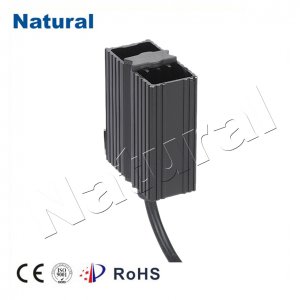In today’s rapidly advancing technological landscape, the demand for efficient and compact heating solutions has grown significantly. The development of small semiconductor heaters has emerged as a groundbreaking solution to address this need across various industries and applications. This article explores the concept, advantages, and applications of small semiconductor heaters.

Understanding Small Semiconductor Heaters A small semiconductor heater, also known as a Peltier heater or thermoelectric heater, is a solid-state device that utilizes the Peltier effect to generate heat or coolness when an electric current passes through it. Unlike traditional heating elements that rely on resistive heating, semiconductor heaters offer several advantages due to their unique operating principles. The Peltier effect, named after its discoverer Jean Charles Athanase Peltier, relies on the junction of two different conductive materials to create a temperature differential and consequently transfer heat. Advantages of Small Semiconductor Heaters Efficiency:Semiconductor heaters are highly efficient in converting electrical energy into heat. This efficiency stems from the direct conversion of electrical current to a heat gradient, minimizing energy loss and resulting in faster heat generation. Compactness:These heaters are remarkably compact and can be manufactured in small sizes, making them ideal for applications where space is limited or a precise heat source is required. Precise Temperature Control:Semiconductor heaters allow for precise temperature control by adjusting the electric current flowing through them. This level of control is crucial in applications where maintaining a specific temperature is essential, such as in medical equipment, research laboratories, and thermal cycling processes. No Moving Parts:Small semiconductor heaters have no moving parts, reducing the risk of wear and tear over time. This characteristic enhances their reliability and durability in various environments. Quiet Operation:The absence of mechanical components contributes to the silent operation of semiconductor heaters, making them suitable for applications where noise reduction is important. Applications of Small Semiconductor Heaters Laboratory Equipment:Semiconductor heaters find extensive use in laboratory equipment, such as incubators, ovens, and thermal cyclers. Their precise temperature control ensures accurate experimental conditions, yielding consistent and reliable results. Medical Devices:These heaters are employed in medical devices like blood analyzers, DNA sequencers, and temperature-controlled surgical tools. Their ability to maintain stable temperatures is crucial for patient safety and diagnostic accuracy. Automotive Industry:Semiconductor heaters play a role in defogging and defrosting car windows during cold weather. Their compact size and rapid response time make them suitable for such applications. Consumer Electronics:Portable food warmers, beverage coolers, and electronic device cooling systems all benefit from the compact and efficient nature of semiconductor heaters. Energy-Efficient Homes:In residential settings, these heaters can be integrated into smart thermostats and energy-efficient heating systems, contributing to reduced energy consumption. Aerospace and Aviation:Semiconductor heaters are used in aerospace applications, including temperature-sensitive components in satellites and spacecraft, where maintaining stable conditions is vital. In conclusion, small semiconductor heaters have emerged as a versatile and efficient solution for generating controlled heat in various applications. Their compactness, precision, and energy efficiency make them a favored choice across industries ranging from electronics to healthcare. As technology continues to evolve, the advancements in semiconductor heater design and manufacturing are likely to lead to even more innovative and impactful applications.